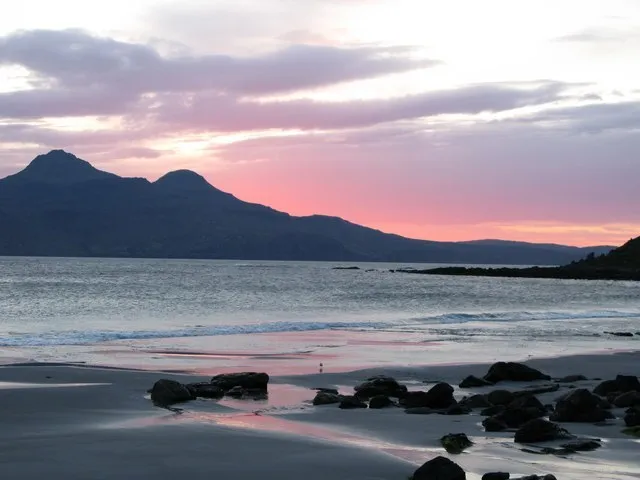The Singing Sands
Scottish Country Dance Instruction
THE SINGING SANDS (S3x32) 3C set Barry Priddey Silver Rose1- 8 1s and 2s dance the Tourbillon:
1s and 2s turn partners 2H ½ way, 1M and 2L lead partners on 1 place clockwise to end 1s on Ladies' side and 2s on Men's side, 1s set to 2s
1s and 2s ½ turn partners 2H, 1L and 2M lead partners on 1 place to end 2s in 1st place and 1s in 2nd place and 2s+1s cross RH to own sides
9-16 1s dance ½ Figs of 8 (Man round 2s and Lady round 3s), 1s dance ½ reels of 3 (Man with 3s and Lady with 2s)
17-24 1s dance diagonal R&L to end 312
25-32 All set and 3s+1s dance RH across ½ way while 2s cross RH, all chase clockwise ½ way. 231
(MINICRIB. Dance crib compiled by Charles Upton, Deeside Caledonian Society, and his successors)
The Singing Sands
Barry Priddey Silver Rose
Strathspey 3 x 32 bars 3 Couple Repeat 3 Couple Set Longwise Set
1-8 1s2s tourbillon:
1-2 1s 2s turn both hands halfway, progressing clockwise to finish 1s on Ls' side, 2s on Men's side;
3-4 1s2s set on the sides;
5-6 1s 2s turn both hands halfway, progressing clockwise to finish on opposite sides, 1s in 2nd place;
7-8 2s 1s cross by right;
9-12 1s half figures of 8 round second corners;
13-16 2M1L2L 3M1M3L half reels of 3 across, 1s finishing in 2nd place on own sides, 2s 3s on opposite sides;
17-24 2s1s3s diagonal rights and lefts;
25-26 3s1s2s set (on own sides);
27-28 3s1s right hands across halfway WHILE 2s cross by right, all finishing facing clockwise;
29-32 all chase halfway, finishing 2s3s1s.
(MAXICRIB. Scottish country dancing instructions compiled by Reuben Freemantle)
Dance Notes
1-2 1L 2M finish where they started this movement.
5-6 2L 1M finish where they started this movement.
Keith Rose's Crib Diagram
Dance Instruction Videos
The Singing Sands - Scottish Country Dancing Instruction VideoDance Information
Singing sand, also called whistling sand or barking sand, is sand that produces sound. The sound emission may be caused by wind passing over dunes or by walking on the sand.Certain conditions have to come together to create singing sand:
The sand grains have to be round and between 0.1 and 0.5 mm in diameter.
The sand has to contain silica.
The sand needs to be at a certain humidity.
The most common frequency emitted seems to be close to 450 Hz.
There are various theories about the singing sand mechanism. It has been proposed that the sound frequency is controlled by the shear rate. Others have suggested that the frequency of vibration is related to the thickness of the dry surface layer of sand. The sound waves bounce back and forth between the surface of the dune and the surface of the moist layer, creating a resonance that increases the sound's volume. The noise may be generated by friction between the grains or by the compression of air between them.
Other sounds that can be emitted by sand have been described as "roaring" or "booming".
The beach on the NW side of Eigg (and also the beach at Porth Oer on the Lleyn peninsula) is known as the 'singing sands' due to the squeaky sound produced if one scuffs across the dry sand.
Singing Sands - Information Video

Sunset On The Singing Sands Of Eigg
This page uses content under the Creative Commons Attribution-ShareAlike 4.0 International License, along with original copyrighted content and excerpts from Wikipedia and other sources.
Text from this original Singing Sand article on Wikisource.
Image copyright Iain McB under this Creative Commons Licence 2.0.
Back to the top of this Scottish Country Dancing Instructions 'The Singing Sands' page
